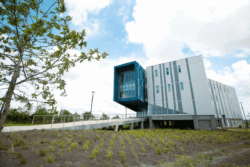Fall 2024
All Aboard
In Houma, LUMCON hopes to train up a sea-savvy citizenry
Published: September 1, 2024
Last Updated: December 1, 2024
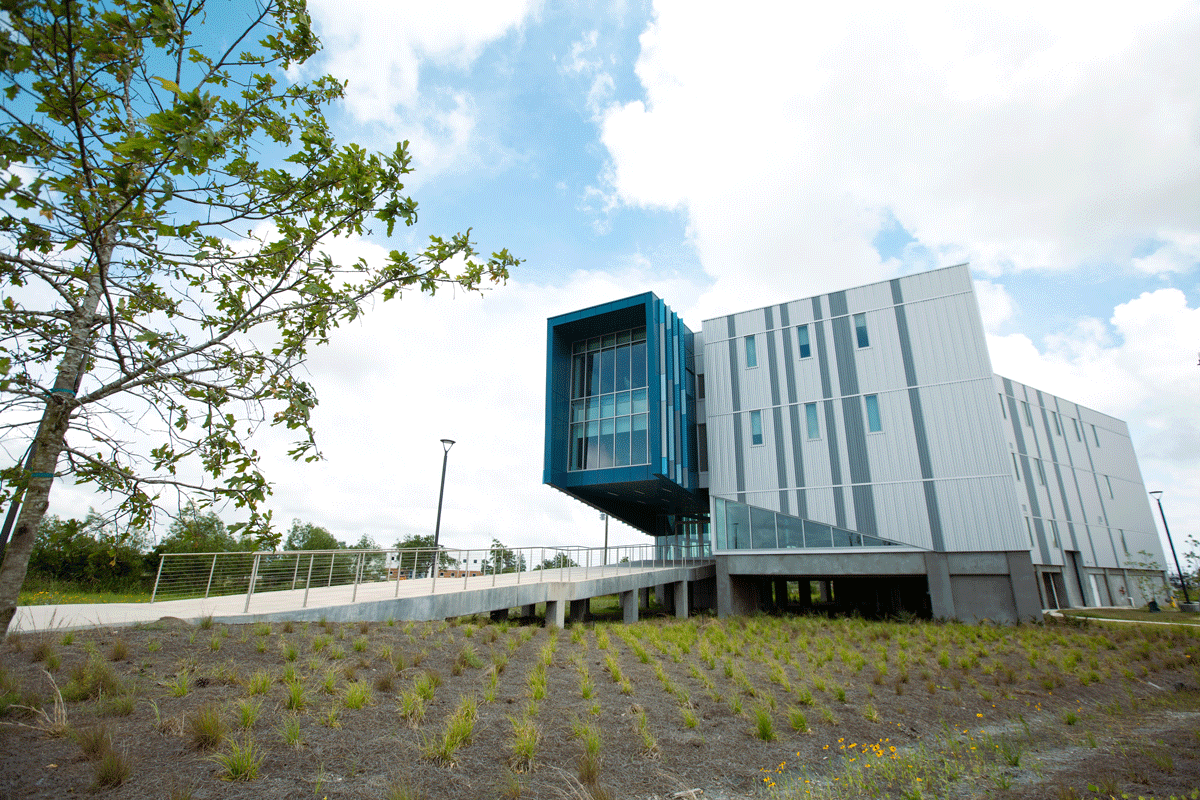
Lucie Monk Carter
Blue Works, the new LUMCON campus, in Houma.
A plastic sculpture of seagrass tendrils hangs from the ceiling of Houma’s new marine education center. Laced through the tendrils are little bulbs, which reflect onto the surface of the kidney-bean-shaped water feature below.
It’s a stunning view just to your right as you step into the lobby of Blue Works, the new campus of the Louisiana Universities Marine Consortium (LUMCON). But while elegantly designed by architects and artists, neither the water or grass are simply for show.
The sculpture’s light bulbs distill meteorological data collected and transmitted from LUMCON’s five coastal weather stations. In changing hue, the bulbs channel the mood along the coast. The water feature is not a koi pond or kiddie pool but a test tank for remotely operated vehicles that need to prove performance while submerged. Blue Works is beautiful, down to its office chairs and file cabinets, but it serves a purpose: to connect Terrebonne Parish area residents to qualified marine technology and coastal science jobs, and to build the excitement and education they’ll need to dive into these careers.
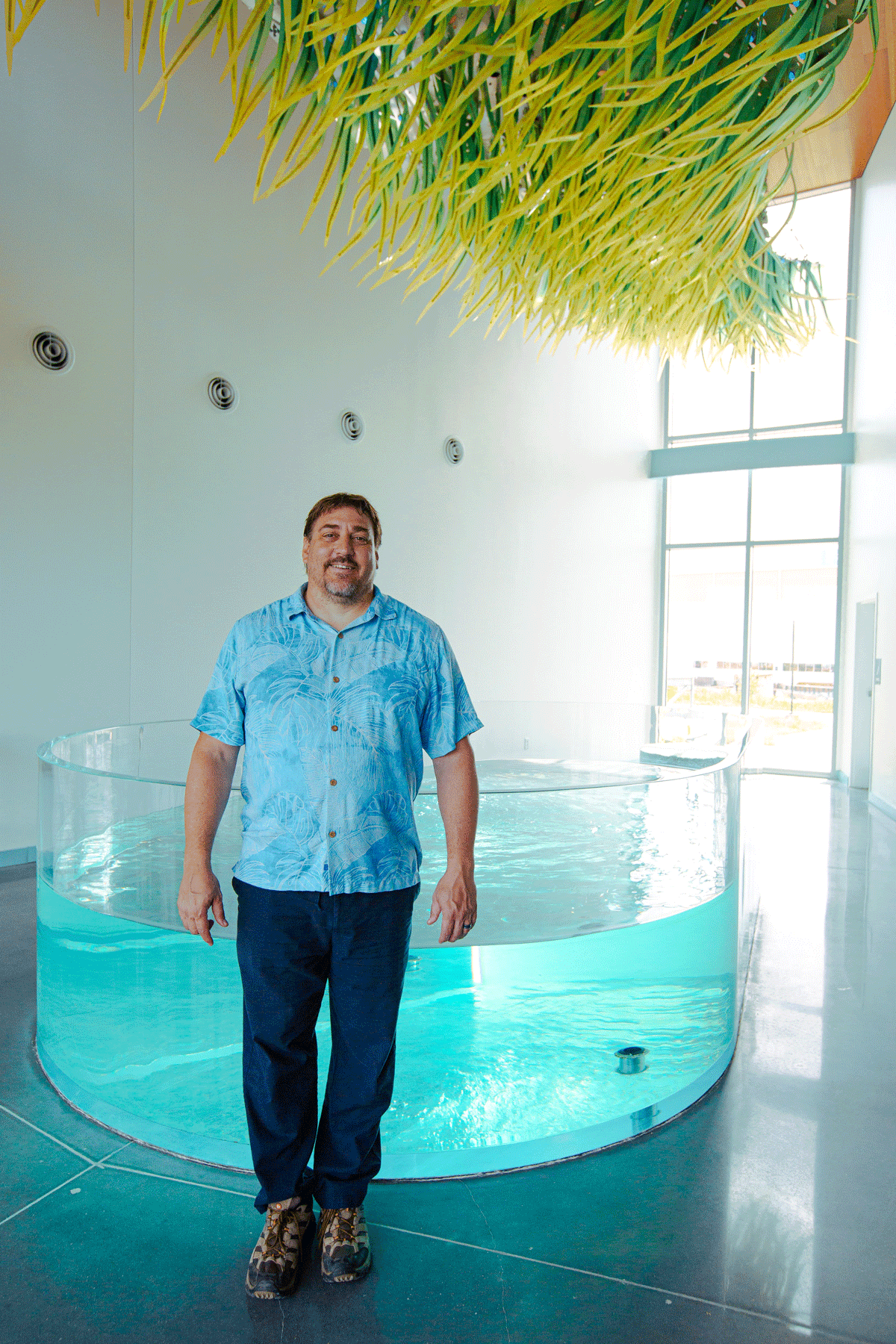
LUMCON’s executive director and chief scientist Dr. Brian Roberts. Lucie Monk Carter
“We’ve been having to recruit people from out of state,” said Dr. Brian Roberts, LUMCON’s executive director and chief scientist since 2022. LUMCON was established by the Louisiana Board of Regents in 1980 to support marine research for universities throughout the state. The consortium comprises post-secondary educational institutions in Louisiana, including the public four-year universities, the community and technical colleges, and the ten members of the Louisiana Association of Independent Colleges & Universities (e.g., Tulane, Franciscan Missionaries of Our Lady University, Centenary College).
The early days saw scientists operating out of trailers—as well as a Fourchon field station leased from Nicholls State University—until the completion of the Marine Center in 1987. In 1996 the center was named for Woodrow J. DeFelice, former Lafourche Parish Schools superintendent and member of the Louisiana Board of Regents.
Situated between the deltas of the Atchafalaya and Mississippi Rivers, in the Barataria–Terrebonne Estuary, the center’s Cocodrie location is immensely valuable for research into sea and estuarine environments, and LUMCON has no plans to shift its headquarters inland in the near future. “This [new campus] is an expansion of opportunity for us,” said Roberts. “Cocodrie is very remote.” Vulnerability is an issue too. The DeFelice Center frequently floods and Hurricane Ida took her own substantial bite. “It poses some challenges for us being as exposed as it is, and it’s also pretty far away from the population, both the members of our consortium as well as the local community. There are not a lot of people who live all the way down the road in Cocodrie.”
Community outreach is a key prong in LUMCON’s efforts. While forecasts for the years ahead aren’t crystalline, it’s obvious that a citizen population that’s informed and adept will be vital for coastal Louisiana. Blue Works is just one part of a phased plan to establish a maritime education and research campus right at the heart of Houma’s maritime industry. The Houma campus of Fletcher Technical Community College is just two lots down. The Houma Navigation Canal runs through the backyard, which connects Blue Works down to Cocodrie headquarters. A bulkhead and boat slip under construction will allow research vessels to dock further inland, including the brand-new R/V Gilbert R. Mason, named for a Biloxi doctor and civil rights leader who fought for equal access to Mississippi’s coastal beaches.
Like the Cocodrie center, Blue Works will run field trips and summer camps, with the benefit of being just down the road from many of the schools it aims to serve. LUMCON also hopes to connect with the substantial homeschooling population in the area. “The hardest part of homeschooling is science, because you don’t usually have any sort of equipment to be able to do that,” said Roberts. “So one of the programs that we’re going to be able to launch here is to have a homeschool science program.”
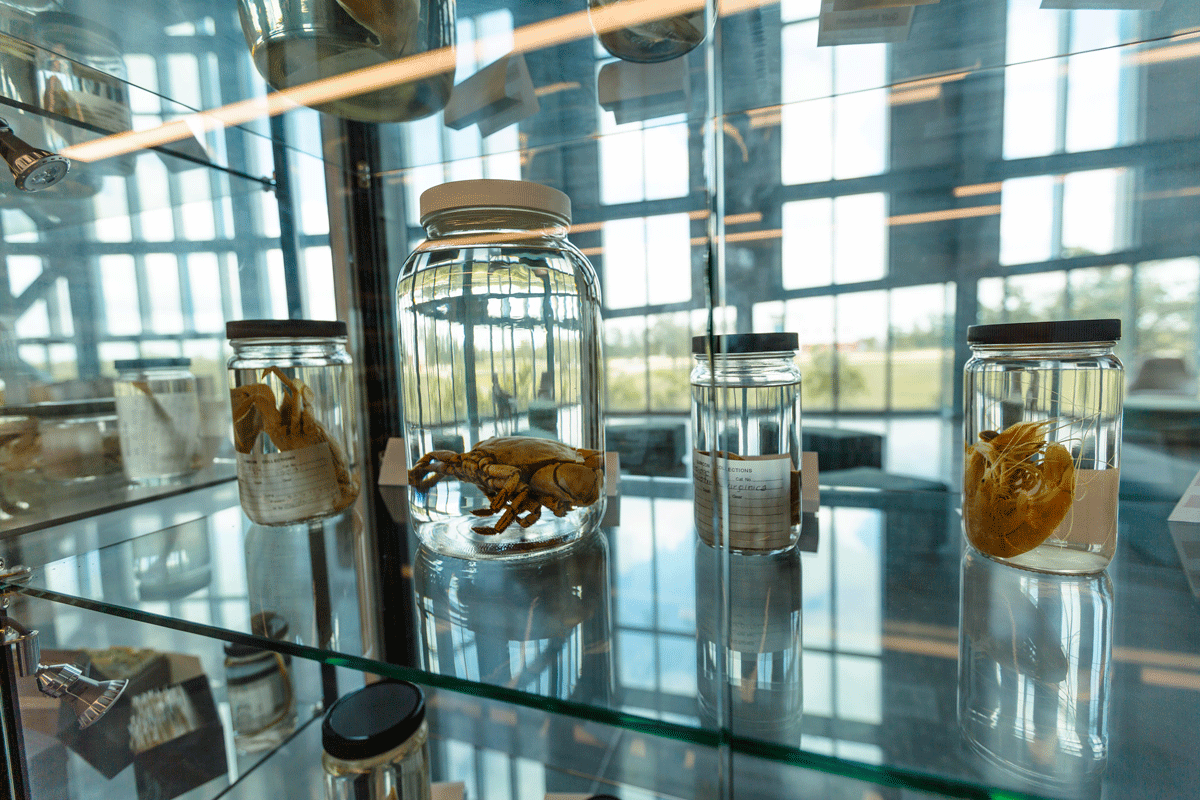
Jarred marine specimens at Blue Works, LUMCON’s new Houma campus. Lucie Monk Carter
Roberts touts “experiential, place-based learning” over an approach that never moves outside the textbook. The outreach isn’t just for kids either. “Unlike most institutions within higher education, we don’t focus just at the college level,” said Roberts. “We say our education programs run Pre-K to gray.”
Blue Works, with its expansive lobby, open corridors, and large conference rooms, is designed to hold a crowd. And the laboratories, specimens, research library, and makerspace are all avenues to explore. While some students study phytoplankton or ocean acoustics, others are building ship engines. “We can engage more frequently and directly with the public. We can do public lecture series, we can do adult education programs. We’ll not just lecture to them about how something works. They can get hands-on in the laboratories to be able to do that. So it allows us to reach a different audience. We can also make people aware of what we’re doing down the road [in Cocodrie] and maybe they’ll be interested in going down there and checking that out as well.”
Flexibility is built into nearly every room at Blue Works, from rearrangeable work tables to a conference room that doubles as a command center during adverse events. “We don’t want to design a facility that’s obsolete ten years from now,” said Roberts. “You never know how our uses will evolve.”
Lucie Monk Carter is a writer and photographer in Baton Rouge.
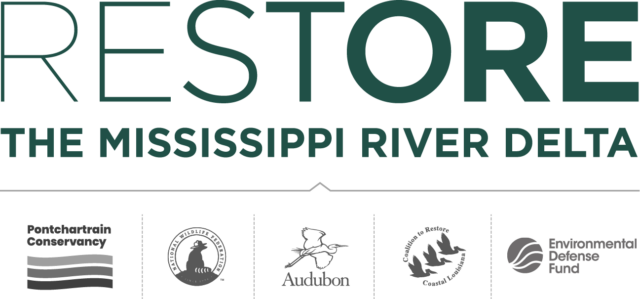 Restore the Mississippi River Delta is a coalition of Environmental Defense Fund, National Audubon Society, the National Wildlife Federation, Coalition to Restore Coastal Louisiana, and Pontchartrain Conservancy. Together, we are working to rebuild coastal Louisiana’s nationally-significant landscape to protect people, wildlife and jobs.
Restore the Mississippi River Delta is a coalition of Environmental Defense Fund, National Audubon Society, the National Wildlife Federation, Coalition to Restore Coastal Louisiana, and Pontchartrain Conservancy. Together, we are working to rebuild coastal Louisiana’s nationally-significant landscape to protect people, wildlife and jobs.
